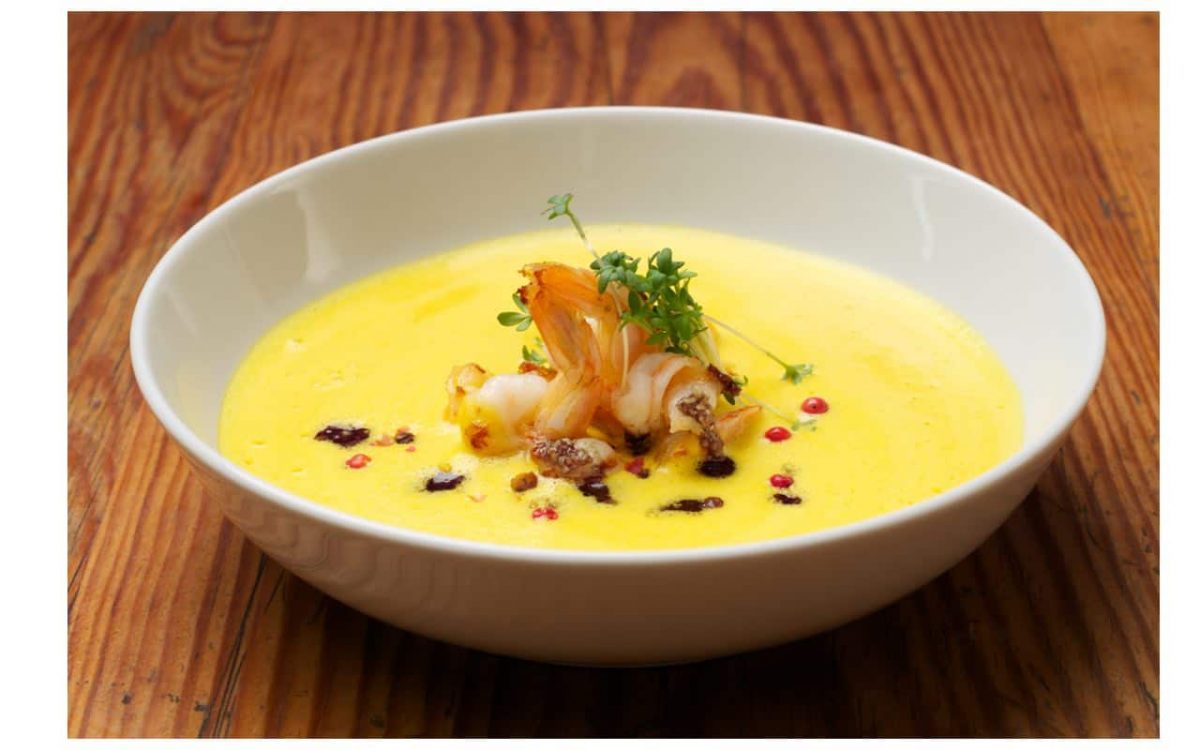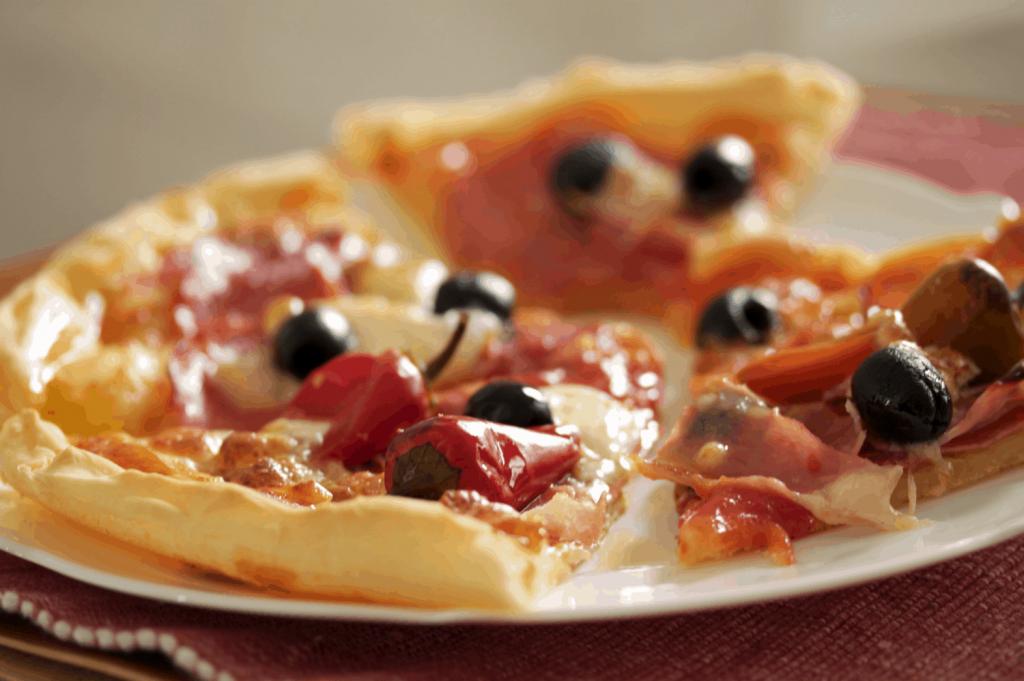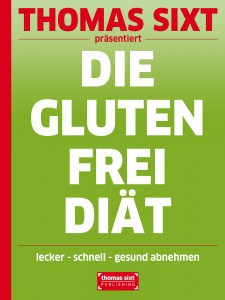How Gluten Free Nutrition Works

Author:
Thomas Sixt is a chef, food photographer, cookbook author and blogger.
Here he shares recipes, answers cooking questions and helps with cooking.
How Gluten Free Nutrition Works: For a gluten-free diet you will find gluten-free recipes here on my cooking page. You can replace any recipe with gluten-free ingredients and prepare your dishes gluten-free.
In this article you will find all relevant information if you want to change your diet to gluten-free.
I answer the question “what is gluten-free” in this article, and I have drawn up a list of gluten-free Cereals and Pseudo Grains and a list of foods containing gluten.
Who does not tolerate gluten does not need to stick his head in the sand, the change to a gluten-free diet is not difficult.
A gluten-free diet offers many advantages when properly implemented. Through the positive occupation with one’s own eating habits, nutrition can be controlled more consciously.
A gluten-free diet in combination with optimised eating behaviour and lots of vegetables can help you lose weight.
1. What is Gluten?
Gluten is a gluten protein that is found in the most common cereals: wheat, spelt, rye, barley and green kernels contain gluten.
Oats must be specially labelled as gluten-free, since oats often originate from farms that process cereals containing gluten, so oats can also contain gluten.
 delicious gluten-free pizza
delicious gluten-free pizza
2. What is gluten-free?
The following points are important for gluten-free nutrition and for answering the questions “What is gluten-free” and “gluten-free food”:
3. What is a gluten intolerance?
Gluten intolerance is a disease of the mucous membrane of the small intestine due to hypersensitivity to components of gluten, which occurs in many cereals.
In children, this intolerance to gluten is called celiac disease, in adults it is called Sprue.
Synonyms for celiac disease are gluten-sensitive or gluten-induced enteropathy, intestinal infantilism, non-tropical or native celiac disease, gluten intolerance, Heubner-Herter disease.
The diagnosis of celiac disease or celiac disease is not always easy or clear.
4. Symptoms of Gluten Intolerance
Symptoms of gluten intolerance can include digestive disorders, weight loss, obesity, reduced performance, constant fatigue, skin rashes, strange bowel movements with changing constipation and diarrhoea. Children suffer from growth disorders as well as constant restlessness and discomfort.
In addition to the physical complaints that occur, untreated gluten intolerance blocks the absorption of nutrients in the intestine.
Due to the damaged intestinal mucosa, vitamins, minerals and other vital substances can only be absorbed insufficiently or not at all by the body.
The deficiency symptoms and complaints that occur are often insidious and are rarely attributed to celiac disease or sprue by doctors.
In the case of gluten intolerance, a permanent switch to gluten-free replacement products must be made.
5. List of gluten-free Cereals and Pseudo Grains
The following cereals and pseudo cereals can be used in gluten-free diets:
Amaranth, buckwheat, guar gum, locust bean gum, potatoes (no cereals listed), tapioca, manioc flour, teff, millet, maize, rice, wild rice, quinoa.
List of gluten-free cereals and pseudo-cereals or gluten-free substitute ingredients:
5.1 Amaranth
Amaranth is also called foxtail, also called amaranth, belongs to the family of the foxtail family.
Available as:
Seeds similar to millet, available as whole amaranth, amaranth flakes, puffed amaranth, amaranth flour.
Ingredients:
High protein and mineral content, essential amino acids, calcium, magnesium, iron, zinc, carbohydrates and fibre.
5.2 Buckwheat
Buckwheat is also known as Black Welschkorn, Heidekorn, Hadn or Gricken and is a knotweed plant.
Available as:
Buckwheat hulled wheat, buckwheat groats, buckwheat semolina and buckwheat flour.
Ingredients:
Valuable protein building blocks such as lysine, arginine, tryptophan. Rich in calcium, iron, potassium, magnesium and vitamins B1, B2, B3 and E as well as traces of copper and cobalt.
5.3 Guar Gum
Guar gum is obtained from the seeds of the guar bean.
Available as:
Guar gum is mainly used as an emulsifier and thickener and should only be used to a limited extent.
Ingredients:
Is listed under number E412 as an additive.
5.4 Locust Bean Gum
It is obtained from the legumes of the carob tree.
Available as:
Locust bean gum is listed under number E410 as an additive. It is a thickener and emulsifier and should only be used to a limited extent.
Ingredients:
Pectin, minerals,
B vitamins, fiber and secondary plant compounds.
5.5 Potatoes
The potato is also called potato and ground pear and belongs to the nightshade family.
Available as:
Potato fresh, potato flour
Ingredients:
Vitamin A, C and B vitamins, sodium, potassium, magnesium, calcium, phosphorus, iron.
5.6 Tapioca
Tapioca is pure starch, which is obtained as a by-product in the production of manioc flour.
Available as:
Tapioca flour or starch
Ingredients:
Vitamin B in small amounts.
5.7 Manioc Flour
Manioc flour is obtained from the manioc root.
Available as:
Manioc flour
Ingredients:
Phosphorus, calcium, iron, vitamins A, C, B1, B2.
5.7 Teff
Spellings also known as Tef or dwarf millet, is a plant species within the family of sweet grasses.
Available as :
Teff seed and teff flour
Ingredients:
Sodium, potassium, calcium, phosphorus, magnesium, iron, vitamins: E, B1, B2, B3, B6 in 100g teff contain 8g fibre.
5.8 Millet
Millet is a collective name for small-fruited husk cereal with 10-12 genera and belongs to the plant genus sweet grass. Millet is the grain richest in minerals.
Available as:
Millet seed, millet flour
Ingredients:
fluorine, sulphur, phosphorus, magnesium, potassium, silicon (silica), iron
5.9 Maize
Maize, also known as kukuruz, is a plant species within the family of sweet grasses.
Available as :
Maize grains, maize flour, maize grits, maize germ oil
Ingredients:
Numerous minerals such as sodium, potassium, magnesium, calcium, manganese, copper, zinc, phosphorus, selenium. Vitamins A, B2, B3, B5, B6, E and folic acid. Maize also contains essential and semi-essential amino acids.
5.10 Rice
Rice is a gluten-free cereal obtained from the rice plant (Oryza sativa).
Available as :
Rice, rice flour
Ingredients:
Vitamins B1, B2, B6, E and niacin as well as minerals such as potassium, manganese and magnesium.
5.11 Wild Rice
Wild rice is also called water rice and describes a plant species of the sweet grasses. It belongs to the relatives of rice (Oryza) but is not a wild form of the same.
Available as: Rice
Ingredients:
Essential amino acids such as arginine, isoleucone, lysine, methionine, phenylalanine, valine, vitamin B2 and niacin, high content of polyunsaturated linolenic acid, iron and phosphorus. Has a dehydrating effect due to its high potassium content and low sodium content.
5.12 Quinoa
Quinoa is also called Inca rice, riceelde, Inkakorn, rice spinach, Andes millet or Perureis and belongs to the family of the foxtail family.
Available as:
Quinoa seed
Ingredients:
High protein content, magnesium and iron.
6. List of gluten-free Foods
The following ingredients and foods are gluten-free in their natural state. Please note that many industrially processed foods are unsuitable for gluten-free nutrition due to contamination with gluten. It is best to include freshly cooked and homemade foods in your diet.
Are gluten-free:
- fruit and vegetables
- potatoes, salads
- milk, natural yoghurt
- buttermilk, curd cheese
- butter, cream cheese natural
- natural cheese
- vegetable oils
- meat
- fish and seafood
- sugar
- honey, jam, marmalade, maple syrup
- nuts
- legumes
- pure spices and herbs
- eggs
Other gluten-free foods and foodstuffs are: tofu, soy milk, mozzarella, pure fruit juices, water, wine, sparkling wine.
7. Be careful with Foods that contain Gluten
In the case of gluten-free diets, the following cereals should always be avoided:
Wheat, rye, barley, oats, green spelt, spelt, other related cereals and primeval grains (such as kamut, einkorn) and all foods made from them, such as..:
Flour, semolina, barley, starch, flakes (muesli), breadcrumbs, pasta, noodles, pasta.
Unless otherwise indicated, gluten is contained in the following products:
Bread, rolls, baguettes, gnocchi, breaded meat, fish, pizza, pasta, dumplings.
Furthermore gluten is also contained in: Cakes, cakes, puff pastry particles, strudel dough, yeast pieces, biscuits, muesli bars, ice wafers, salt sticks, snacks, chips, beer, malt beer.
8. Gluten-free Eating, practical Tips
Eating and eating gluten-free is not always easy. A good start is a short list of preparations that may contain gluten. This should make the next restaurant visit a lot easier.
9. Gluten is often hidden in Food
Gluten can be “hidden” in many products and preparations. See the list below:
10. Gluten may be present in the following Foods and Products
Bound sauces, instant soups, instant meals, puddings, French fries, croquettes, potato pancakes, sausages, sausages, cream cheese preparations – especially with herbs, ice cream, nut nougat creams, dairy products with fruit,
fat-reduced products, chips, flips & snacks, ketchup, mustard, cold sauces, chocolate, spice blends.
11. Why Gluten is often found in Food
For reasons of manufacturing technology and to save money in production, many semi-finished and finished products today contain gluten ingredients such as wheat flour, wheat starch, wheat bran or gluten.
12. Positive Properties of Gluten in the Industrial Production of Foodstuffs
Properties of gluten that food manufacturers and consumers have valued so far:
Gluten gels
Gluten emulsified (combines fat with water)
Gluten binds water
Gluten stabilized
Among other things, gluten is a good carrier for aromas
13. Labelling Obligation for Gluten contained is often not sufficient
Since 25.11.2005, ingredients containing gluten must be declared on the list of ingredients of packaged products. Unfortunately, products are rarely labelled with “contains gluten” or is “gluten-free”. Further exemptions from the labelling requirement for substances that no longer contain “harmful potential” are problematic. Of particular importance here are the saccharification products, i.e. sugar obtained from wheat starch, which are used in many foods. Some manufacturers specify the gluten-containing starting material for these saccharification products, others unfortunately do not. Pay particular attention to the information on ingredients and ingredients on the packaging.
14. Gluten-free Eating out in Restaurants and Hotels
At best, inform your host and service staff in advance and use special hotels and restaurants that offer gluten-free cuisine. Many restaurants and hotels offer a special coeliac diet.
In an emergency, a Japanese restaurant or sushi restaurant is a good alternative, as is a Chinese restaurant. Note that commercial soy sauce is rarely gluten-free, use original brewed Tamari soy sauce or specially prepared gluten-free.
15. Further Information on gluten-free Nutrition
 The nourishing councellor ‘The Gluten-Free Diet’ is available as e-book for iPad®, Kindle® and as PDF edition.
The nourishing councellor ‘The Gluten-Free Diet’ is available as e-book for iPad®, Kindle® and as PDF edition.
